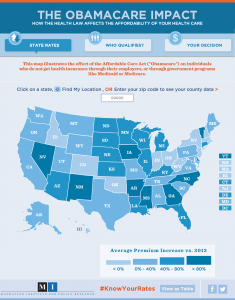Jindal’s Attack on Walker’s Health Plan is Off-Base
Yesterday, I addressed Governor Scott Walker’s health plan in largely positive terms. Governor Bobby Jindal, a competing Republican presidential contender, has launched a broadside against Walker’s plan, describing it as a “new federal entitlement.”
The charge is way off-base. Governor Jindal proposed a health reform back in 2014, via his America Next policy shop. The point of contention is that Governor Jindal’s proposal would not offer everyone a refundable tax credit. Instead, it would eliminate the exclusion of employer-based health benefits from taxable income and replace it with a standard deduction.
I criticized the proposal when it was issued. True, it is an easier switch than a refundable tax credit. On the other hand, a deduction does nothing for low-income households – which means the welfare state continues to exist. Jindal himself proposed throwing $100 million more at states to fund their medical safety nets.


 he first year public health exchanges existed, Prime Therapeutics’ (Prime) members who enrolled in plans on these exchanges filled an average of 11.7 prescriptions, exceeding fills by commercial members by 13.6 percent. Public exchange members were also 2.5 times more likely to have hepatitis C or HIV, driving an almost 200 percent higher spend on related medicines.
he first year public health exchanges existed, Prime Therapeutics’ (Prime) members who enrolled in plans on these exchanges filled an average of 11.7 prescriptions, exceeding fills by commercial members by 13.6 percent. Public exchange members were also 2.5 times more likely to have hepatitis C or HIV, driving an almost 200 percent higher spend on related medicines.





